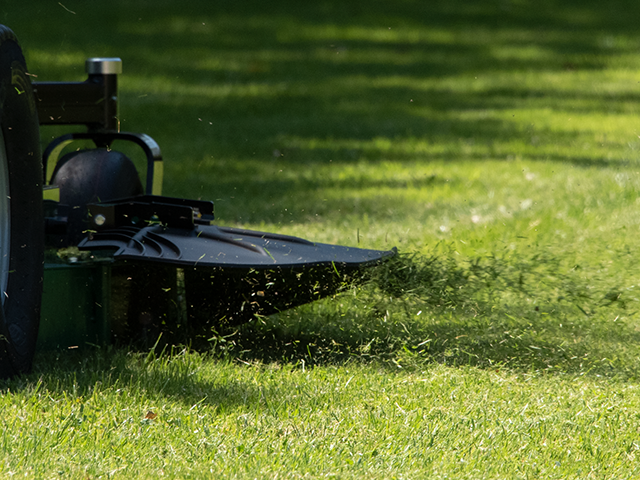How to prevent grass clumping when mowing
07 Feb 2019

Regardless of whether it’s summer or winter, mowing the lawn is something you can expect do throughout the year. And regardless of whether you prefer to bag the clippings or not, you’ll know that when they clump together it’s a problem that only adds time and effort to the job.
There’s more than one reason why grass clumps after you’ve mowed it and a few ways you can stop it from happening in the first place. Here’s a quick overview that can help you get back to enjoying your lawns and spend less time mowing them.
So, what makes grass clipping clump together?
1 – It’s too wet
When grass gets wet it loves to stick to the grass around it and depending on how soft the ground is or how much rain you’ve had it can spell disaster for your lawns. Heavy mowers will start to sink into the grass and whip up moisture as they cut your grass, which causes grass to clump in matted wet wads that clog the deck of your mower and its catcher. These clumps, when together on the lawn, can restrict sun/nutrients from reaching the grass below them, damaging the health of your lawn and possibly even leaving dead patches.
Land, lawns and gardens - get the essentials on maintaining a great lifestyle block. Download your free guide now.
2 – It’s too long
When it’s been a while since you last mowed the lawns, you might think that by setting the mower to its usual cutting height you can just power over your grass and get everything back to normal. Think again. Not only does longer grass disperse less than shorter grass (due to its length), but your lawns can become discoloured and even patchy if too much is taken at once.
3 – Your mower isn’t up to the job.
Depending on the type of mower you have, either mulch or side discharge, it might be worth looking at either sharpening the its blades or upgrading altogether. Things like rain and the length of your grass can factor in here, so if you’re unsure whether to blame the tools or not be sure to test it out on a fine day. Some side discharge mowers, particularly cheaper varieties, don’t have deep enough decks or properly designed baffles to throw the grass over a wider area, causing ‘windrows’ of grass to build up right next to the strip being cut. Likewise with mulching – a simple cover over the outlet is not a ‘mulch kit’ – you’ll need to look at getting a proper mulching kit which includes different blades, baffles, and a chute cover.
How can I stop grass from clumping in the first place?
Mow when it’s dry
Dry grass isn’t just easier to walk on, but it’s easier to mow as well. You won’t end up with a tracked out bog when you finish up and cleaning your mower will be a breeze as well.
Mow frequently
Keeping on top of your lawns can be tricky in the winter months but getting out there when you’re able to makes all the difference.
Don’t cut more than a third at a time
Taking more than your mower can chew doesn’t only waste gas, but it puts unnecessary pressure on it and can do more harm to your lawns than good. If they’re getting out of control, it’s best not to take more than a third of its length at a time before giving the grass a chance to adjust before taking more.
Consider upgrading
If you don’t think your mower is up to the task, you might want to have its blades sharpened or consider a new machine better suited to mulching or side discharge. We stock a range of reliable mowers that can tackle any job in no time and are often customized uniquely for New Zealand conditions. Our team of experts are more than able to take a look at your mower for you, so feel free to get in touch if you have any questions